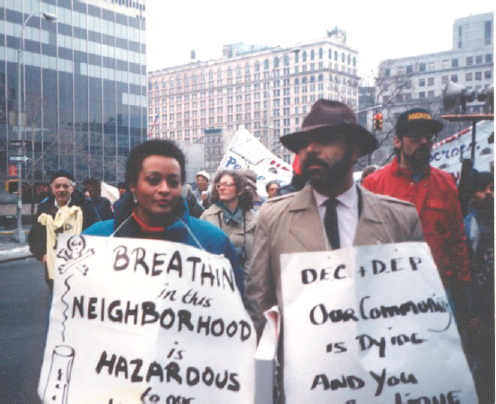
The Nashville Metropolitan Planning Organization increased the percentage of projects that incorporate safe walking and biking from 2 percent in 2005 to 70 percent in 2010 based on civil rights laws.
In response to community action, the U.S. Department of Housing and Urban Development withheld funds for proposed warehouses pending a full civil rights and environmental justice study in 2001, which led to the creation of L.A. State Historic Park.
WE ACT for Environmental Justice (WE ACT) supports and empowers residents to advocate for and achieve more environmentally healthy communities. WE ACT’s work is grounded in civil rights analyses and law. When the Metropolitan Transit Authority sent 200 more buses to already overcrowded depots in Harlem and northern Manhattan communities experiencing alarmingly higher asthma rates than other New York neighborhoods, the group filed an administrative complaint with the U.S. Department of Transportation under Title VI of the Civil Rights Act of 1964.
In 2008, WE ACT organized the Environmental Justice Leadership Forum on Climate Change, a national coalition of 42 justice organizations across 20 states. The forum published a Clean Power Plan Tool Kit, which provides guidance for state agencies and stakeholders to conduct civil rights and environmental justice analyses and meaningful engagement with vulnerable communities in planning for and implementing the federal Clean Power Plan rule.

The U.S. Environmental Protection Agency partnered in court with community leaders in Los Angeles to sue the city to repair the sewer system in a battle for clean water justice.
Philanthropic groups, like foundations, can build on the civil rights movement and advance social justice through advocacy and organizing for structural change. Funders can support community interventions in health equity by supporting education, compliance, and enforcement related to civil rights laws.
To learn more about the role of philanthropy, click here.
Civil rights strategies are tools available to all community stakeholders. These approaches have helped mitigate the negative impact of many forms of social and health discrimination. It’s necessary to continue this work to overcome discrimination and the structural barriers that affect health to help make all communities safe, vibrant, and healthy.
To learn more about civil rights strategies for health inequity, please check out chapter 6 and chapter 8 of the Communities in Action report.